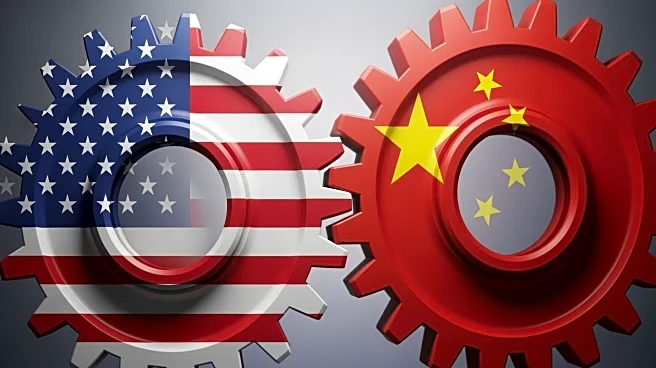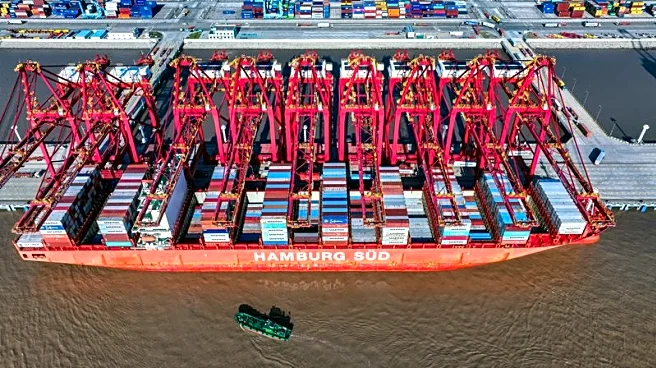What's Happening?
In September, China did not import any soybeans from the U.S., marking the first time since 2018 that shipments fell to zero. This development is attributed to the ongoing trade dispute between the U.S. and China, with high tariffs on U.S. imports being
a significant factor. Instead, China increased its soybean imports from South America, particularly Brazil and Argentina. The shift in sourcing is part of China's strategy to avoid U.S. tariffs and secure soybean supplies from alternative markets.
Why It's Important?
The halt in U.S. soybean imports by China has significant implications for American farmers, who may face substantial financial losses due to reduced market access. The trade dispute continues to strain U.S.-China relations and highlights the vulnerability of American agriculture to international trade policies. The increased reliance on South American soybeans by China could lead to long-term shifts in global trade patterns, affecting the competitiveness of U.S. agricultural exports.
What's Next?
Without a resolution to the trade dispute, U.S. soybean farmers may continue to experience economic challenges. The potential for a soybean supply gap in China early next year could create opportunities for U.S. exports if trade negotiations progress. However, the window for U.S. soybean sales is closing as China secures supplies from other countries. Ongoing trade talks between the U.S. and China will be crucial in determining future market dynamics and the potential for renewed U.S. soybean exports.















